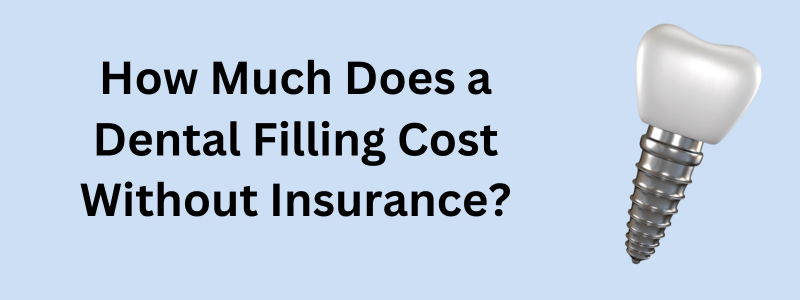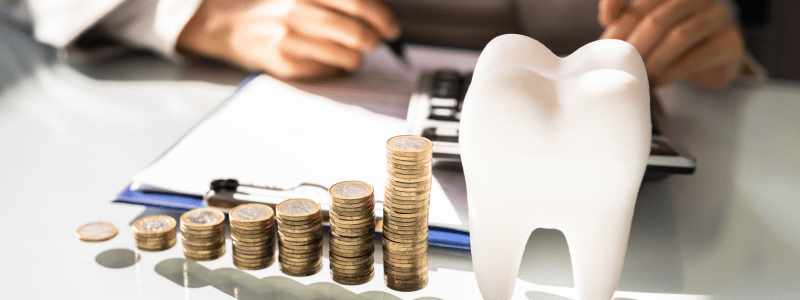
Maintaining good dental health is crucial for overall well-being, but the costs associated with dental care can be daunting, especially if you don’t have insurance. One common procedure that often concerns patients is dental fillings. So, how much does a dental filling cost without insurance? Let’s dive into the details and explore everything you need to know about dental fillings, including costs, types, and ways to save money.
What is a Dental Filling?
A dental filling is a treatment used to restore the function, integrity, and morphology of missing tooth structures resulting from decay or external trauma. Essentially, fillings repair cavities and prevent further decay, preserving the tooth.
Types of Dental Fillings
There are several types of dental fillings, each with its unique characteristics and cost implications.
Amalgam Fillings
These silver-colored fillings are made from a mixture of metals, including silver, mercury, and tin. They are durable and less expensive than other types.
Composite Fillings
Composite fillings are made from a tooth-colored resin material. They blend well with natural teeth, making them a popular choice for visible areas.
Gold Fillings
Gold fillings are highly durable and long-lasting but come with a higher price tag due to the cost of the material and the expertise required to place them.
Ceramic Fillings
Ceramic fillings, often made from porcelain, are aesthetically pleasing and resistant to staining. They are also more expensive compared to composite and amalgam fillings.
Glass Ionomer Fillings
These fillings release fluoride, which helps protect the tooth from further decay. They are typically used for fillings below the gum line or for children.
Factors Affecting the Cost of Dental Fillings
Several factors influence the cost of dental fillings without insurance:
Type of Filling Material
Different materials have varying costs, with amalgam being the least expensive and gold the most costly.
Location of the Tooth
Fillings for teeth that are harder to reach or more visible can be more expensive.
Extent of Decay
Larger cavities or those requiring additional procedures can increase the overall cost.
Dentist’s Experience
Highly experienced dentists may charge more for their expertise.
Geographical Location
The cost of living and the demand for dental services in your area can affect prices.
Average Cost of Dental Fillings Without Insurance
The cost of dental fillings can vary widely. Here’s a rough breakdown:
Amalgam Fillings
- Cost: $50 to $150 per filling
Composite Fillings
- Cost: $90 to $250 per filling
Gold Fillings
- Cost: $250 to $4,500 per filling
Ceramic Fillings
- Cost: $250 to $4,500 per filling
Glass Ionomer Fillings
- Cost: $90 to $250 per filling
Prices can also vary by region, with urban areas typically having higher costs than rural areas.
Amalgam Fillings: Cost and Benefits
Overview
Amalgam fillings have been used for over a century due to their durability and cost-effectiveness.
Cost
As mentioned, amalgam fillings range from $50 to $150 per filling.
Advantages and Disadvantages
Advantages:
- Durable and long-lasting
- Less expensive
Disadvantages:
- Silver color is not aesthetically pleasing
- Contains mercury, which raises health concerns for some
Composite Fillings: Cost and Benefits
Overview
Composite fillings are popular for their natural appearance, blending seamlessly with the surrounding teeth.
Cost
Composite fillings typically cost between $90 and $250 per filling.
Advantages and Disadvantages
Advantages:
- Aesthetic appeal
- Bonds directly to the tooth
Disadvantages:
- Less durable than amalgam
- More expensive
Gold Fillings: Cost and Benefits
Overview
Gold fillings are prized for their durability and biocompatibility.
Cost
Gold fillings are the most expensive, ranging from $250 to $4,500 per filling.
Advantages and Disadvantages
Advantages:
- Extremely durable
- Biocompatible
Disadvantages:
- High cost
- Requires multiple visits
Ceramic Fillings: Cost and Benefits
Overview
Ceramic fillings offer excellent aesthetics and durability.
Cost
These fillings also range from $250 to $4,500.
Advantages and Disadvantages
Advantages:
- Aesthetic appeal
- Stain-resistant
Disadvantages:
- Expensive
- Can be brittle
Glass Ionomer Fillings: Cost and Benefits
Overview
Glass ionomer fillings are useful for specific applications, like below the gum line.
Cost
They generally cost between $90 and $250 per filling.
Advantages and Disadvantages
Advantages:
- Releases fluoride
- Good for children
Disadvantages:
- Less durable
- Not suitable for heavy chewing areas
Cost-Saving Tips for Dental Fillings Without Insurance
Dental care without insurance can be pricey, but there are ways to reduce costs:
Dental Schools
Students need practice, and their work is supervised by experienced dentists. This can significantly cut costs.
Discount Dental Plans
These plans offer discounts on various dental procedures for a yearly fee.
Community Health Clinics
These clinics provide dental care on a sliding scale based on income.
Negotiating with Your Dentist
Some dentists may offer payment plans or discounts for cash payments.
Importance of Regular Dental Check-Ups
Regular check-ups can help prevent cavities and catch problems early, saving money in the long run.
Preventive Care
Regular cleanings and exams can prevent the need for fillings.
Early Detection of Dental Issues
Early treatment of cavities can prevent more extensive and expensive procedures.
Financing Options for Dental Fillings

If paying upfront is a challenge, consider these options:
Payment Plans
Many dental offices offer payment plans to spread the cost over several months.
Dental Loans
Specialized dental loans can cover procedures and are paid back over time.
Credit Cards
Some patients use credit cards to manage costs, but be mindful of interest rates.
Alternative Treatments to Fillings
In some cases, alternatives might be appropriate:
Dental Sealants
Sealants protect teeth from decay and can be a preventive option.
Inlays and Onlays
These are more extensive than fillings but less invasive than crowns.
Conclusion
Dental fillings are essential for maintaining oral health, but the costs can add up, especially without insurance. By understanding the types of fillings, factors affecting costs, and available cost-saving strategies, you can make informed decisions about your dental care. Remember, investing in your dental health now can prevent more significant expenses down the road.
FAQs
1. How long do dental fillings last?
Most fillings last between 5 to 15 years, depending on the material used and your oral hygiene practices.
2. Are dental fillings painful?
The procedure is typically performed under local anesthesia, so you shouldn’t feel pain. Some discomfort might occur afterward.
3. Can I eat immediately after getting a dental filling?
It’s best to wait until the anesthesia wears off to avoid biting your cheek or tongue. Avoid hard or sticky foods for a few days.
4. How do I care for my dental fillings?
Maintain good oral hygiene by brushing twice a day, flossing daily, and visiting your dentist regularly.
5. What happens if I don’t get a dental filling?
Ignoring a cavity can lead to more severe dental issues, including infections, tooth loss, and the need for more invasive procedures like root canals or crowns.
To further improve your financial planning, check out our article on What is Budgeting and Why is it Important?
